A New Computer
Today I am introducing you to a “new” computer. I’m finding that people who use their computer just for email, facebook, the web, writing, spreadsheets and simple games are finding it easier, more enjoyable and less troublesome than Windows or Mac. The new computer I a talking about is called LINUX. Wait a moment some of you are saying. That’s been around since almost the dawn of the Internet and you are right. What’s So Good About It? First of all (believe it or not) it is familiar. Where I’ve installed it the (fussy) clients for whom things always seem to not be quite right have enthused to me about how much they like Linux. On a more technical level, with Microsoft and Apple changing their computers to look and act like their phones, a lot of people are still having problems with the new Windows and Macs computers. At affinity we chose a “distribution” of Linux that looks and feels a lot like the old XP, Vista and Windows 7 computers so it seems familiar even if it is not the same as any one of those. Another advantage is that the virus writers do not, yet, care too much about Linux. Like Macintosh, previously, there are not too many of them out there. Also, up to this point, most of the Linux have been sophisticated and don’t fall for many of the virus traps. I’ve used Linux since 1999 and have only run a virus scanner to catch Windows and Mac viruses on my servers. A Linux computer is more stable. It’s design is modeled after the famous Unix operating system of Bell Labs and of Berkly Systems Development. It infrequently needs a reboot for an update and hardly ever needs one because of system problems are rare. I’ve had one system up for two years without a reboot. Finally, it is less expensive. On a typical Windows based system you pay about twice the price of any other component to use (not own) Windows on that combination of hardware, non-transferable. When building a Linux system that part of the cost is removed. You only pay for the installation, which you pay for on Windows and Mac too. A Hobbyist’s Computer Grows Up Linux, like Windows, was onetime considered a hobbyist’s computer. It wasn’t ready for real work and was too complicated to use. Over the years the Linux community (Linux is a group effort, not owned by one entity) has made the system more and more sophisticated attempting to do all things that Windows and Mac do. That effort continues and now Linux is becoming the standard in big businesses and most web pages come from Linux machines. But there are many people who don’t need 99% of what computers can do. These people prize ease of use and stability for the few things they do use. Who Can Benefit From a Home/Office Linux As mentioned, initially the home user that doesn’t want to add purchased Windows or Mac programs to the computer. Also business that use web based programs that are not tied to Microsoft or Apple software (e.g. Access, Excel) can use Linux. Windows programs can be run on Linux, like they can be run on Mac, but not graphically intense programs like high powered video games. All of your documents, pictures and movies can be used on Linux. They can be viewed, edited and created on Linux, too. Though a few files are saved in a format that only the company that sold them to you can decode. Some of those don’t work,...
read moreWe Are Microsoft, Trust Us
Lately, here in Oklahoma there has been a rash of social engineering attacks on computers. Social engineering is just a fancy way of saying SCAM. People will call you saying they are from Microsoft, Apple, a virus protection company (Norton, McAfee…) or your Internet provider, and say that your computer has been detected as causing problems and it needs to be checked or fixed. How the Scam Works As mentioned above, someone calls using a name that is “reputable”. You trust that name and thus trust them. They hope you don’t question how you can be sure they are from who they purport to be. These are scam artists that are very well versed in convincing you to do what you know not to do. They are no different than the fake roofers who come to town and go door to door after a tornado or hail storm trying to sell you a roof you don’t need or will never show up, even after they’ve gotten a deposit from you. Besides gaining your trust, they then add scare tactics to confuse you. They’ll tell you that you have a large number of viruses or that you could be in violation of the law or of the peril your bank account is in. Remember, these scamers are professional. They will convince you that the people with whom you have been getting your computer work done have not done their job and they(the scammers) will fix it. If you do have problems with your computer and your Internet provider is going to stop your Internet they will contact you by paper mail. This often happens if your computer already has been compromised and a rogue program is sending information from your computer to outsiders. Once the scamers get on your PC they quickly plant a back door on your computer. A back door is a program that will let them use your computer any time without your permission. Often, people soon regret their decision to open up their PC to these people and shutdown the PC or the Internet. However, by the time the PC is off the Internet, the back door is in the computer and the damage is done. If you don’t terminate the call and Internet connection right away then they try to get more from you. They’ll try getting money from you for fake service, get your credit card info, drivers license number, etc… They will try to get anything that they can use or sell in the criminal underground. What Is the Damage? Besides getting money and your identity, they can now use your computer to store stolen goods, use to serve web pages that trap other Internet users for them and their tools for breaking into yet more computers. You may not notice any changes to your computer. The more accomplished criminals will try to keep your computer running so you don’t get it fixed. Often though the computer will be slower. Other symptoms may or may not appear, such as the Internet Security you have may not update or parts of it will become disabled. The Internet connection may seem not to work or be intermittent. When you go to a page on the Internet another page will be displayed. For those who read this blog regularly I’m sorry for the repeat of the topic. However we are getting more of these calls. So it bears repeating DON’T GIVE UP CONTROL OF YOUR PC to anyone you don’t know. If you get such a call just hang up. If not delay them. Turning off...
read moreBack to Backup
May 05, 2014 An affinity for News Kurt R. Rahlfs Back to Backup Many of you have heard me harp on the importance of your data and backups. I became a big fan of correct backup procedures when, in graduate school, I lost a term project a week before the end of the term. This was because the company I was working for backed up its data by writing over last week’s backup. I destroyed my work just before the backup took place so my empty set of data wrote over the mostly complete set of data from the previous week. This is more oriented towards businesses from small to large but the basics apply to the home user and the hobbyist who records income in quicken or QuickBooks. Data Protection The most common failure of a computer is the hard disk. It is a mechanical device so it can just stop from the time you take it out of the box to years after. When it goes and gets replaced you are left with even less than you had when you got it from the manufacturer. Though not really a backup, the first line of protecting your data is to use one of the approaches to “mirror” your data on more than one disk. This way if one disk fails, you are still up and running on the other disk. You can then replace the failed disk with minimal down time. Otherwise you may have days of recovering your data and reloading all the programs that had been loaded since the computer left the assembly line. Basic Backup Though you may seem to be protected by the disk mirroring, it doesn’t protect from things that you may do unintentionally (like me for my term project) or that hackers, thieves or nature can do. Computers have come to me with anything from sewers backing up to fires and tornadoes. This protection needs a backup. The first backup I now recommend is a cloud backup. The main advantage of this is that the backup is not near the computer. Backups with tapes or disks that are attached to the computer only protect you from the mistakes you make. The more common problems are not protected by local backups. Help The national business stores that work on home PC’s, like Best Buy and Apple, don’t have a staff of industry certified technicians. At affinity all our technicians have A+ certifications to work on any of your computers and Net+ certifications to work on your networks and Internet. A Security+ is also available to protect your computers. To always get an industry certified technician call affinity Computer Masters at...
read moreLicensure and software replacement
With today’s global exchange of data and information, issues of licensing and copyright are all the more confusing. When it comes to the programs and applications you use in your personal and business computing, it is important to understand what those laws mean for you. What can be replaced Many times the question of license never comes up until a hard drive has crashed, the operating system has been rebooted and the computer user discovers that their favorite programs are missing, or unable to be used. This is a good news/bad news scenario. The good news is, if you have your license key, and a copy of the software, or download password, those programs are likely able to be restored. The bad news is that most users don’t know they need those things, and will have to repurchase the software in order to get it back. What you will have to buy If you did not record your license key number, keep the packaging it came with, or write down serial numbers for downloaded software, you will probably need to buy new software. Unfortunately, without these items there is no way for the software maker to ensure that you did in fact purchase a legal copy, and to protect themselves they will require you to repurchase. How to find your code keys (code of authenticity) 25 characters So, how do you get this vital information? Simple. With packaged software, you will look for a “code key” or “code of authenticity” also known as the COA, on the package, in the manual, or on the jewel case of the disk. This code is typically 25 characters and will be labeled. Keep your packaging handy, but also write, or print these into a file that can be kept safe with the title of the software and a list of when and where it was installed. For downloaded software, the COA is not as common. Many of the companies that sell download software generate their own serial number or code key. These can vary from 4 characters, up to the 25 character code. Write or print these out as well, and don’t just save them in your computer. Another option is to save them in a “cloud” document on a service such as Google Docs, or Drop Box. Downloaded software typically has email password, save...
read moreData Recovery
> >Symptoms of hard drive failure Symptoms of hard drive failure, or imminent failure can take on many forms. The computer may stall unexpectedly, files and programs may appear garbled, the screen may flash black, or blue, and in some cases, beeps are heard, indicating a problem. In many instances, the system will warn you. Whenever any of these things occur, if you do not have a current backup of your system, and it will start normally, make one immediately, or bring it in so we can backup your data. If the problem is not a hard drive, but rather some form of malware, other hardware problem, or virus, we can detect this quickly and make the necessary repairs to avoid data loss. In the case of a hard drive that has failed and will not start normally, there are two possible scenarios. Best Case: your data, or at least a portion can be retrieved using normal measures so that it can be restored onto a new hard drive. This is typically a job for the pros, and we can handle it for you in our lab. Any recoverable data will be backed up on to one of our secure servers, then burned to disk, or transferred to a new hard drive for you. Worst Case: If the hard drive is not merely corrupted, but is physically damaged, no data at all may be able to be recovered. In these cases a simple test will tell us and we can offer the services of a data recovery lab where the disk will be taken apart and mined for existing files that can be retrieved. This is very expensive, and results are iffy, but in the case of important information, or priceless media, it is available. Whatever the case, Affinity stands ready to see you through it. We will recover as much of your data as possible, as quickly and at the lowest cost we can. We will also help you to replace your hard drive, bring your system back online and walk with you through restoring your files, if they are...
read moreSo you think you have a virus
Virus, Spyware, and malware are terms that are often used interchangeably by non-technical users to refer to unwanted software glitches that attach themselves to your Operating System and programs and cause your system to run at less than peak efficiency, sometimes shutting it down completely. The good news is that a software problem such as a virus or malware does not attack the machinery of your computer, and can be removed. The bad news is, it can mean needing to reboot your operating system to make the removal complete. If you have followed our advice and have a backup system, this will cost you a couple of hours, but will not effect your data. If you have not, please accept our condolences, but much of your precious data may well be lost to the ether. Before you panic, here are some steps you can take. Virus Scan Most computers come with some type of virus and malware scanning software that will help you identify and remove the unwanted files. Since each of them operates slightly differently, we will not attempt to run through those steps here. Typically, you can find your anti-virus program in your programs list in the start menu. Most programs will take you step by step through the process of running them with onscreen prompts. Before attempting any scans, your should restart your computer in safe mode. To do this, shut the machine down and restart, while pressing the F8 button found in the top row of your keyboard. This will give you bootup options. Select “safe mode with networking” so that you can access the internet for downloads or to find advice if needed. Run your anti-virus and malware detection software in safe mode, allowing it to complete and remove any files it found. Once this is complete, restart the system normally and run the scan again to check for hidden issues. If your scan comes back clean and the computer seems normal, return it to normal use. If not, contact us for an appointment to complete the...
read more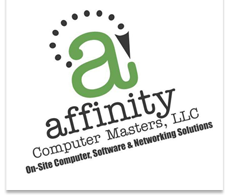

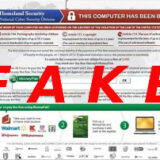




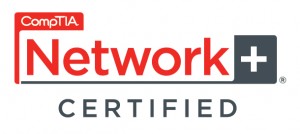
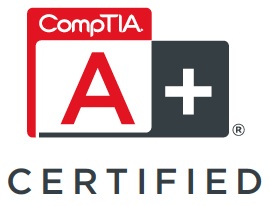
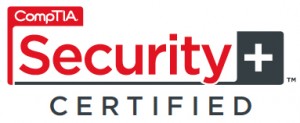
Follow Us!